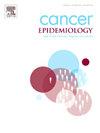Clinical trial participation for vulnerable cancer patients in Denmark and England
IF 2.3
3区 医学
Q3 ONCOLOGY
引用次数: 0
Abstract
Background
New cancer therapies are introduced through clinical trials. However, eligibility criteria can pose a barrier to vulnerable patients, limiting access to potentially improved treatments and reducing generalizability of the results. The aim of this study was to investigate participation in clinical trials for vulnerable cancer patients in Denmark and compare results to England.
Patients and methods
We utilized population-based registries of systemic anti-cancer therapy from the North Denmark Region and England covering, respectively, 2008–2021 and 2016–2019. We included adult patients (≥18 years) who received SACT in relation to a solid cancer. Vulnerability was defined as the lowest quintile in relation to socioeconomic position. We estimated odds ratios (OR) for participation in a clinical trial.
Results
We included 15,173 patients in the Danish cohort and 336,218 in the English. From these 1107 (7.3 %) and 12,502 (3.7 %) participated in a clinical trial, respectively. The adjusted OR for participating in a trial for vulnerable patients was 0.81 (95 % CI 0.68–0.96) in Denmark and 0.80 (95 % CI 0.76–0.84) in England. The strongest associations were found within gynaecological cancers.
Conclusion
We found associations of reduced trial participation for vulnerable individuals in both countries and consistent associations within gynaecological cancers.
丹麦和英国易感癌症患者的临床试验参与
新的癌症治疗方法是通过临床试验引入的。然而,资格标准可能对脆弱患者构成障碍,限制了获得潜在改进的治疗方法并降低了结果的普遍性。本研究的目的是调查丹麦易感癌症患者临床试验的参与情况,并将结果与英国进行比较。患者和方法我们使用了北丹麦地区和英格兰基于人群的系统性抗癌治疗登记,分别涵盖2008-2021年和2016-2019年。我们纳入了与实体癌相关的接受SACT治疗的成年患者(≥18岁)。脆弱性被定义为相对于社会经济地位最低的五分之一。我们估计参加临床试验的优势比(OR)。结果我们纳入了15,173名丹麦队列患者和336,218名英国队列患者。其中1107人(7.3 %)和12502人(3.7 %)分别参加了临床试验。参与易感患者试验的调整OR在丹麦为0.81(95 % CI 0.68-0.96),在英国为0.80(95 % CI 0.76-0.84)。在妇科癌症中发现了最强的关联。结论:我们发现两国易受伤害个体的试验参与率降低存在关联,且在妇科癌症患者中存在一致的关联。
本文章由计算机程序翻译,如有差异,请以英文原文为准。
求助全文
约1分钟内获得全文
求助全文
来源期刊

Cancer Epidemiology
医学-肿瘤学
CiteScore
4.50
自引率
3.80%
发文量
200
审稿时长
39 days
期刊介绍:
Cancer Epidemiology is dedicated to increasing understanding about cancer causes, prevention and control. The scope of the journal embraces all aspects of cancer epidemiology including:
• Descriptive epidemiology
• Studies of risk factors for disease initiation, development and prognosis
• Screening and early detection
• Prevention and control
• Methodological issues
The journal publishes original research articles (full length and short reports), systematic reviews and meta-analyses, editorials, commentaries and letters to the editor commenting on previously published research.
 求助内容:
求助内容: 应助结果提醒方式:
应助结果提醒方式:


